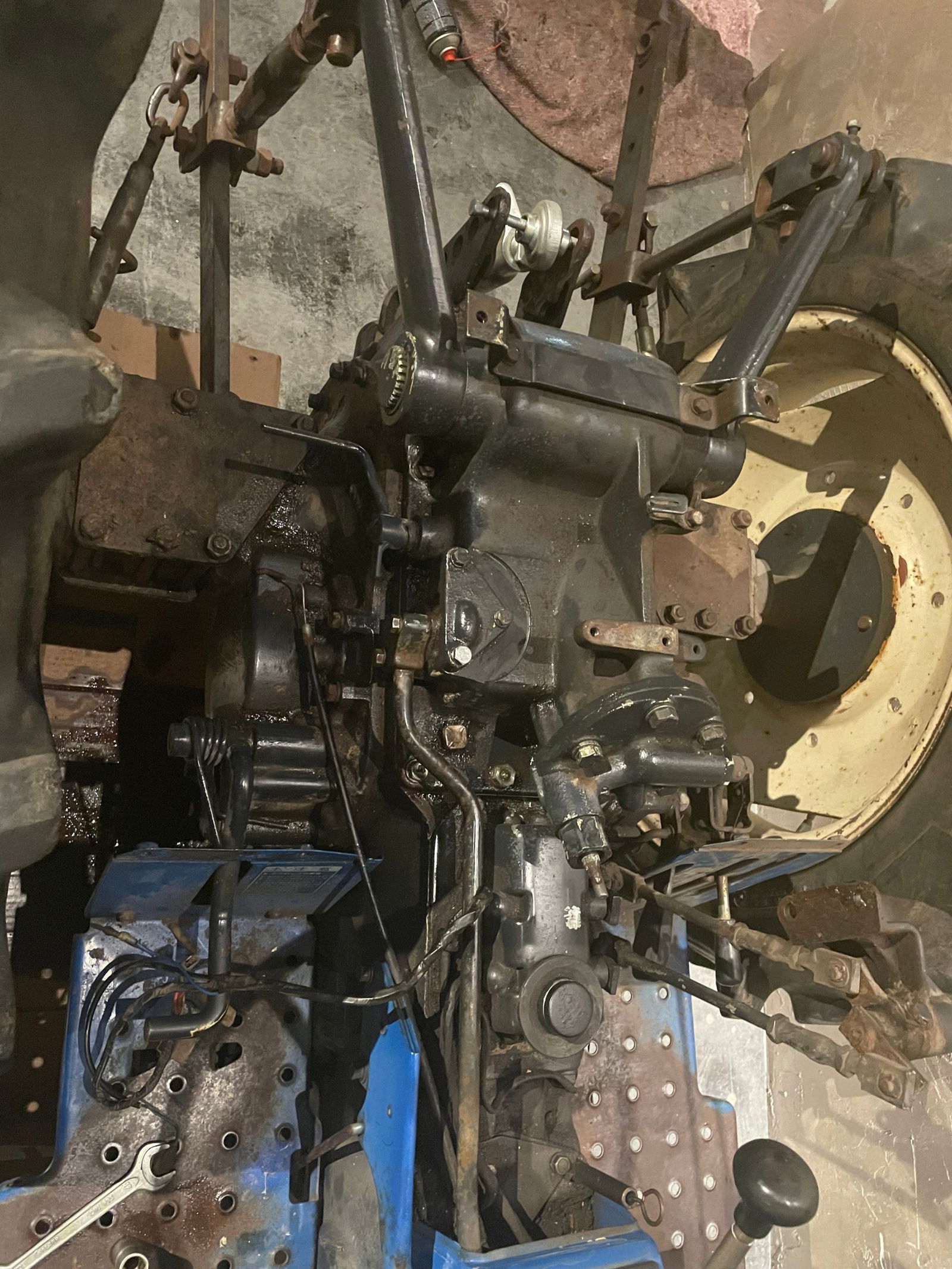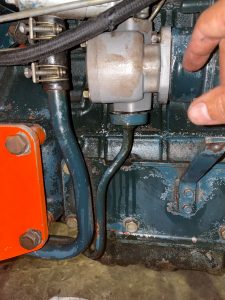
In the past we have had several cases with a rear linkage that does not work or moves slowly. Unfortunately, we have not filmed or photographed all of these situations, but we can do our best to tell you about them using facts and examples. Let it be clear that this blog is about hydraulic pumps and any other related problems.
First problem: Kubota L1802 with front loader
Recently we made a video of a Kubota L1802 that had problems with the front loader. A customer called us with the following;
- Front loader operates slowly and shakes
- Hydraulic pump makes noises and sounds defective
- Hydraulic filter changed and no effect
- Rear linkage similar to the front loader, slow and not strong
At the start, you listen to the customer and come up with a scenario. In this case, it was clear to us that the hydraulic filter was new and that this could not be the problem. These sometimes get clogged up, but that was obviously not the case in this instance. Then we inspected some other things. Plungers that are known to malfunction or refuse to operate because of dirt (we will come back to this later) could not be the problem. Then one problem remained;
- The hydraulic pump as it made different noises and we had the feeling it was at the end.
With full courage and tools, we went to the customer and changed the hydraulic pump (very simple). This can be partly seen in the video that will be added to this blog. After the pump was disassembled and exchanged for the new one, we started the tractor and soon found out that it had done nothing. In consultation with the customer, we left the new hydraulic pump in place, as the old one had been running on air for some time and was making unpleasant noises.
- So what could be the problem?
The hydraulic pump has a suction side (in) and a pressure side (out). Logically, there can be no problem on the ‘out’ side, as it would then leak hydraulic oil.

So we continue on the ‘in’ side. We suspected this because there was foam in the oil, pointing to air in the suction side. After inspecting the suction pipe and seeing nothing strange, there was another cause that seemed logical. The hydraulic filter, which the best man had ordered from a colleague who sells filters. Because they often know about general machinery, we will go into more detail about mini tractors.
Anyway, we had taken a hydraulic filter from our warehouse and exchanged it with the current one. Our filter immediately fitted better, although the previous one looked similar to our own.
We start the tractor after mounting and degreasing the hydraulic oil and yes, the noise is gone. Now the big question; does the front loader and the rear linkage work again?
After driving the machines outside with all the space around us, we tried the front loader and the rear linkage. These immediately worked as they should. So you see, a big problem can have small causes.
As far as we know, the customer is still working with the Kubota L1802 and no further problems have occurred. He did say that he would order the filters from us in the future… ;-).
Second problem: Iseki TL1900 with zero hydraulic pressure
Customer calls us with the problem that the rear linkage of the Iseki TL1900 does not work at all anymore. Also, there is no pressure from the hydraulics anymore. We have made a video of this, however due to lack of time we have not yet placed it online.
Problem identified:
- Rear hydraulic does not work anymore and also does not maintain pressure
- Hydraulic pump partially mounted by customer, because his suspicions were there
- Tailgate disassembled and reassembled, according to the customer there is no problem
When we arrive at the tractor, we see a tractor that has been completely dismantled. A rather sad sight and the customer says he wants to sell it in parts. He was done with it and did not want any extra work.
After a little persuasion that we would solve it, the customer was prepared to give us a chance.
Summary of our thought:
- Hydraulic pump needs to be replaced, as the customer dismantled it completely unnecessarily
- The rear axle does not need to be looked at, as the current man was a ‘top’ mechanic, according to his own words, and had checked it.
- Cuff problems at the cylinder for the rear hydraulic.
The video shows the condition of the tractor when we found it. We took it with us to make a video in our office.
The hydraulic pump is the first thing we start with. An important fact is that the Iseki TL series can have 3 different pumps. Therefore, always pay attention to the gearing of the pump!
Since we have them all in stock, we can immediately start the repair. The old pump is removed and after additional loosening of a number of peripheral issues, the new hydraulic pump fits the Iseki TL 1900. We can therefore conclude that even for an inexperienced person the changeover takes no more than 30 minutes.
After completely securing the hydraulic pump, we start the tractor. Immediately after starting, we hear that the pump starts up and the engine starts to run heavily. As if the hydraulics cannot be pumped around.
A logical reasoning for this is of course the ‘top’ mechanic who has checked the rear axle and thus the plungers and has not cleaned them well enough.
For your information: The plungers are a known problem when the hydraulics are not working anymore. Known characteristics; slow lowering of the linkage or complete blocking of the hydraulic oil! Many well-known tractors which have this problem are Iseki TU1400, 1500etc. Also other brands like Kubota or Yanmar can have this problem. This is purely due to contamination in the hydraulic oil or line.



Continuing with the rear axle. We loosened the bolts and a number of nuts to remove the lid of the rear axle. Then we cleaned the plungers that run through the control valve of the rear linkage.
After that everything was assembled as it was and again the tractor did not function and the hydraulic pressure built up. Then it occurred to me that perhaps the other mechanic had made a mistake when fitting the plungers. So we mounted them the other way round. Everything was reassembled and, by a miracle, everything worked again.
If you have any tips or advice, we would like to help you with our videos. We hope that our Vlogs are informative and that we can help with certain issues!
Until the next blog.
